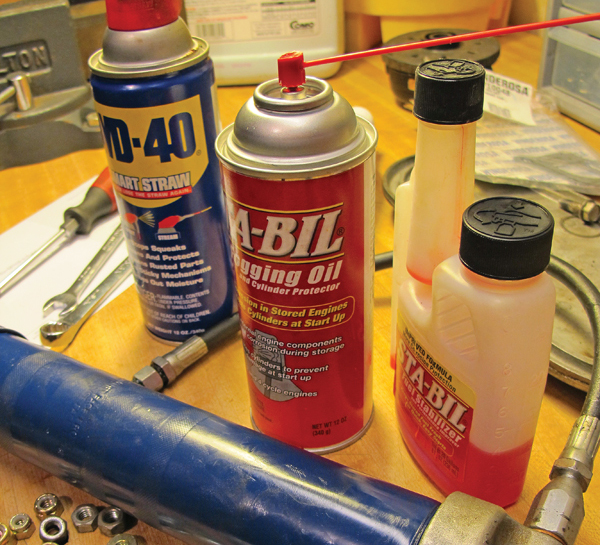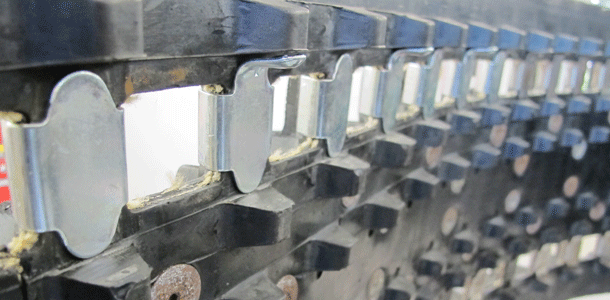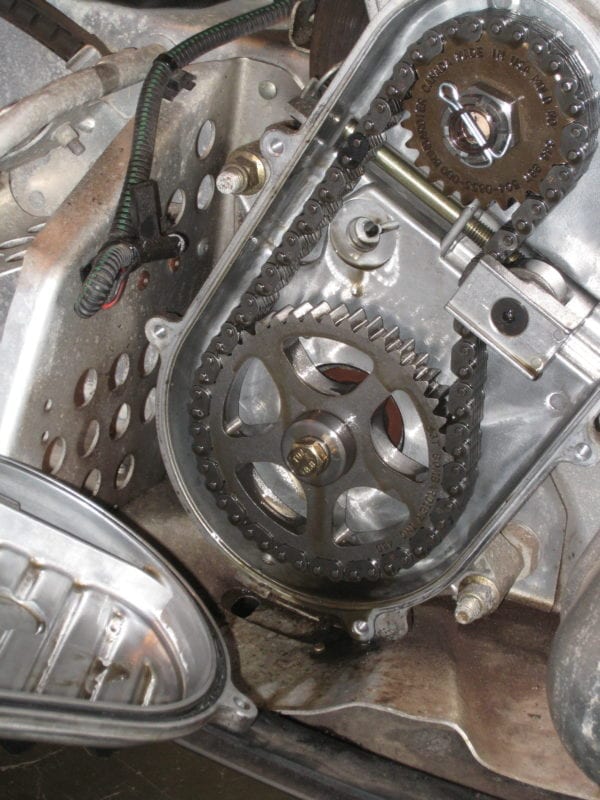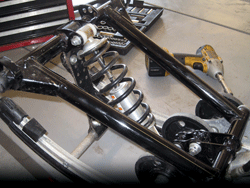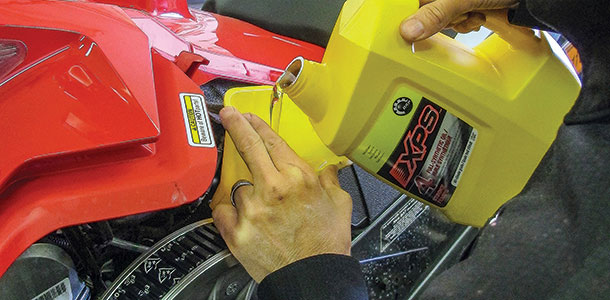It’s a Wednesday afternoon in the middle of a winter with a record amount of snowcover.
Jerry climbs out of his truck, throws his hat backwards on his head and strolls into the service department where he meets Keith, the shop’s service manager.
“I need to drop off my buddy’s 600 to get it fixed,” Jerry says to Keith. “It clunks.”
“OK. We can take care of that. What kind of a 600 is it?” Keith says.
“A ’96 ZR 600. And my buddy told me it’s under warranty so there shouldn’t be any charge for this because he bought it here used last year,” Jerry says. “Oh. He needs it Friday, too.”
At this point, Jerry has made several mistakes that have already gotten the sled’s repair off to a rough start. The broken sled’s owner has made one big mistake — sending Jerry to drop off his sled.
Jerry’s first mistake is that he doesn’t know what kind of sled he’s talking about. There’s no such thing as a 1996 ZR 600; the ZR 600 came out in 1998. From the get-go, service managers need to know what kind of sled they’ll deal with so they can make an educated guess about the machine’s failure.
Jerry’s second mistake is the assumption that the repair will be free of charge without knowing what’s wrong with the sled. Even though a sled might be in its warranty period, not all breakdowns are the result of a defect.
What is Jerry’s third and perhaps most crucial mistake? It’s a Wednesday afternoon during a shop’s busy snow season, and he hopes to get the sled back for the weekend. Does he actually think the shop doesn’t have any other customers?
Don’t be a Jerry.
Dropoff Preparation
Having service work performed on a snowmobile is a two-way street between the sled’s owner and the repair shop’s personnel.
The sled owner owes the shop a good explanation of the sick sled’s symptoms. The shop owes its customer a quality repair performed as soon as possible at a fair price. A sled’s owner lays the groundwork of getting a machine back on its feet by explaining what happened when the machine went down.
John Koenig, service manager at Heinen’s in Osseo, Minnesota, said the owner needs to retrace what led to the breakdown and be prepared to explain the details to the person who will write the work order. Heinen’s is a Yamaha and Arctic Cat dealer.
Did the problem arise suddenly or did the machine slowly act up? Did the machine run smoothly or did it backfire and hesitate? Evaluate factors that could have contributed to the failure, too.
Did the sled start to run poorly shortly after the sled was refueled? If so, did anyone else’s sled in the group suffer similar problems? Knowing this will help the mechanic narrow down the potential cause of a failure, which will lead to a solution more quickly.
The drop-off is best left to the sled’s owner, Koenig said. “They know the sled’s history and are better able to explain what happened when it failed.” Not only does an owner need to be prepared for a service department visit, the machine does, too.
If the sled was towed by another sled back to a trailer, the engine compartment will be a mess. “Some sleds come in and they’ve been towed for 30 miles,” Koenig said. “You open up the hood and it’s just a big mound of ice and snow.”
Mechanics prefer ice-free sleds, Koenig said, so thaw the machine before turning it over to a repair shop if possible.
The Drop
If an owner has his or her story straight, the dropoff should happen as quick as one of Daunte Culpepper’s fumbles. Upon arrival at the shop, be ready to provide accurate information, including the sled’s make, model and year.
Roger Anderson, an owner of R&S Motorsports in Shawano, Wisconsin, is amazed how many people come to his service department without knowing basic information. Other specific information is necessary, such as if it has a special suspension package or aftermarket exhaust.
Owners should be honest and disclose everything that happened when the sled broke down, Anderson said. “If you were running down [a] lake at 100 mph and it was 20 below zero, don’t tell the service writer you were just riding along.” Honesty will make it easier for the mechanic to diagnose the problem and could help cut costs.
Dishonesty about a failure often stems from a person who tries to get a repair covered by warranty that isn’t a factory defect. “Service departments have seen everything many times over. If it’s a warrantable part, it’s a warrantable part. Dealers will figure it out,” Anderson said.
A white lie could cause a mechanic to spend extra time chasing a lost cause, Anderson said. Extra time means more labor hours on the bill. Full disclosure might keep a sled out of the shop altogether.
If a person tried to drive a sled off a trailer one morning with the track frozen to the trailer’s deck, he would have unknowingly burned a thin spot in the drive belt. From that time, he might have felt a clunk in his feet at slow speeds and falsely attribute it to a serious drivetrain problem.
A knowledgeable service writer who hears the details of how the sled was unloaded from the trailer would diagnose that the clunk was caused by the damaged belt instead of a worn driveshaft bearing. A service writer’s quick inspection of the belt would show its damage.
He might replace the belt and send the sled owner on his way without unloading the sled. The owner might have felt sheepish about smoking the belt, but at least his sled wasn’t taken out of commission for a week or more and he didn’t have to pay the shop’s rate just to diagnose and to replace a damaged drive belt.
Something that seems as innocent as a shortened snowflap should be reported because it will hold less snow to contact the tunnel’s heat exchangers and could cause an engine to overheat, Koenig said.
Time Is Of The Essence
Whether a repair will take days or weeks to complete depends on several factors. Parts availability and a heavy workload are main reasons sleds get held up in a service department, Anderson said.
Many breakdowns can be prevented with routine maintenance before the season starts. “Get into the shop to have the carbs cleaned and other things that need to be done,” said Anderson, whose dealership sells and services Polaris, Ski-Doo and Yamaha sleds. “Don’t wait until the first snow.”
Don’t walk into a shop on a Monday in January with a damaged sled that needs a new tunnel, steering post, gauges and related parts and expect to get it back in time for the following weekend. Other factors outside the shop’s control affect a repair’s turnaround time, too.
“Crash jobs tend to take the most time because you’re dealing with an insurance company and authorizations,” Anderson said. “You can’t start a repair until you get an authorization from the insurance company.” Anderson recommends that owners contact their insurance provider before they drop off a crashed sled.
The severity and complexity of a failure determines how long the repair will take. If the sled is in a shop to repair a blown chaincase, which seems severe, the sled’s down time might not be very long because the repair is actually straightforward.
But if a snowmobile suffers from an erratic running problem that needs to be duplicated, a diagnosis and repair will take longer. For example, the cause of a sled’s bog that only occurs at mid-range throttle and seems to get worse after the sled has been driven 5 miles is more of a challenge to pinpoint.
That bog could be caused by one of the clutches, a fuel delivery problem, the engine’s overall health or all of those components could be a contributing factor. This is where a thorough explanation will help. “Give the service writer the exact thing the machine does. Try to give as accurate information as possible so they can try to duplicate the problem,” Anderson said.

